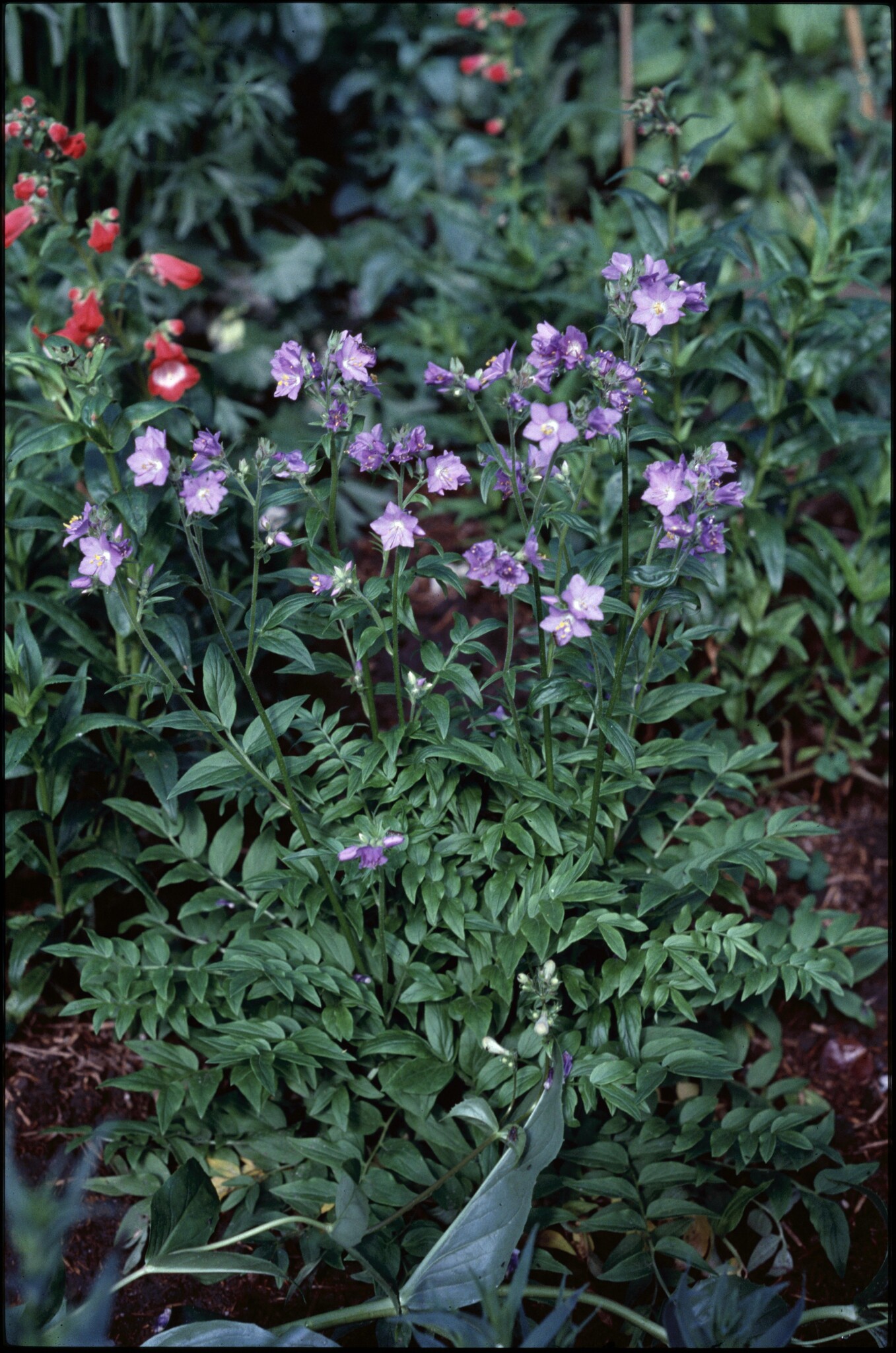
Classical name derived either as a commemoration of the Greek philosopher Polemon or from the Greek polemos — war.
Annual or perennial herbs, sometimes shrubby and rhizomatous or low and spreading, often unpleasantsmelling. Leaves alternate, pinnate or deeply cut. Leaflets entire or divided. Flowers solitary or in branched clusters or dense heads, terminal or axillary, white, yellow, blue or purple, the calyx enlarging with the fruit but not bursting it. Stamens inserted at same level on the tube. Fruit a 3-chambered capsule.
Grown as a border plant for the compound leaves and attractive flowers.
Division or seed.
Calyx not burst by the fruit; stamens inserted at the same level on the flower tube.
About 25 species from northern temperate regions, often montane, a few species extending to Mexico and the Andes.
Davidson (1950).
Source: (2002). Polemoniaceae. In: . Horticultural Flora of South-eastern Australia. Volume 4. Flowering plants. Dicotyledons. Part 3. The identification of garden and cultivated plants. University of New South Wales Press.
